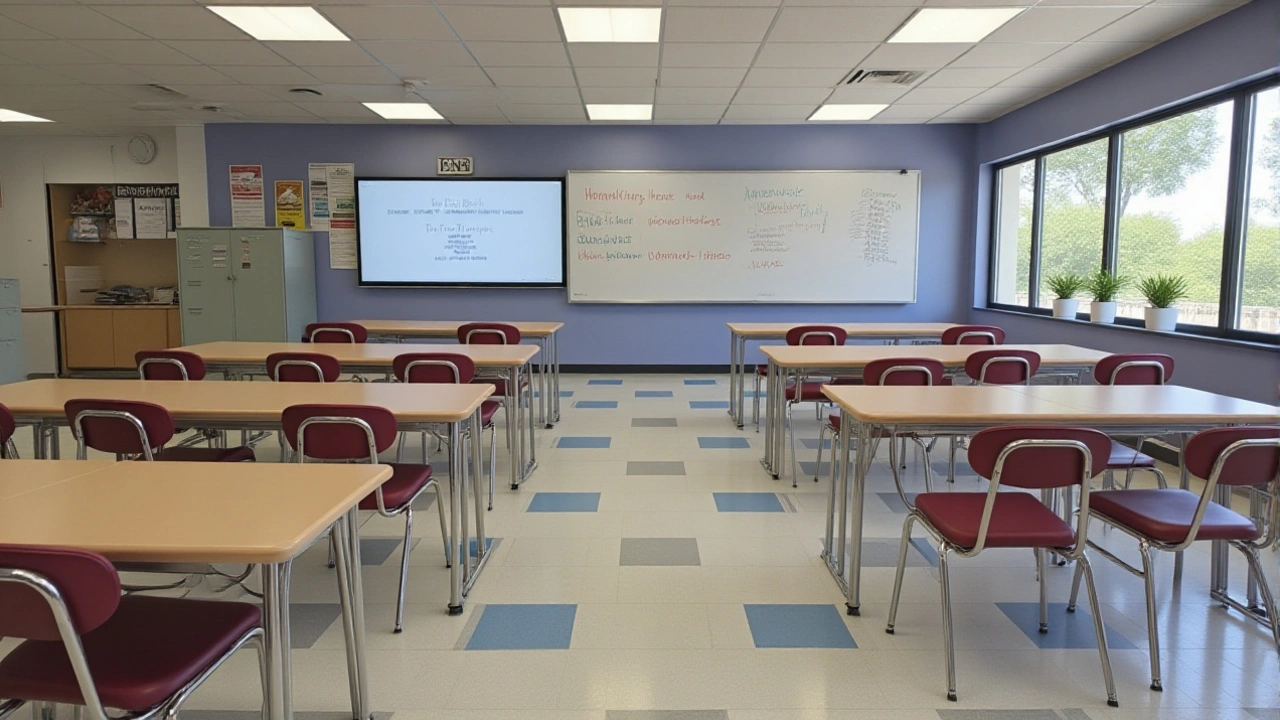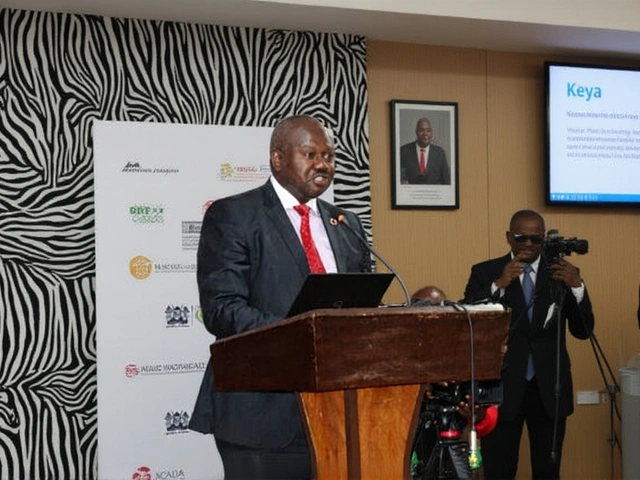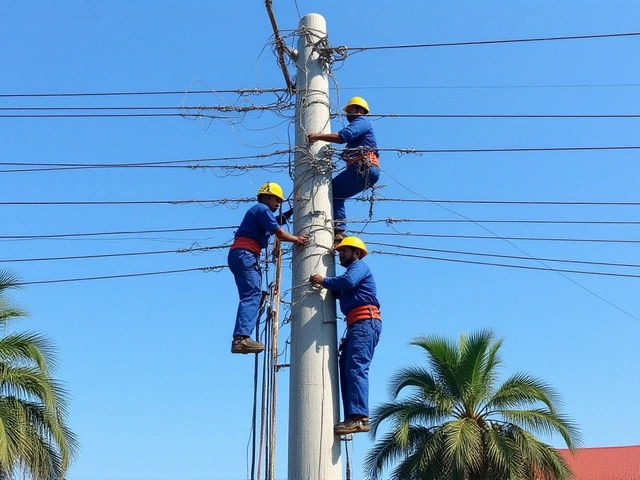When Donald J. Trump signed an Executive Order to dismantle the U.S. Department of Education, the move sent shockwaves through schools, parents and disability groups across the nation. The order, issued on an undisclosed date in October 2025, would shift oversight of the Individuals with Disabilities in Education Act (IDEA) to the Department of Health and Human Services, a pivot championed by the conservative Project 2025 blueprint. Parents of roughly 7.5 million students with disabilities, along with advocacy leaders, warned that the plan could cripple the very services the law was designed to protect.
At a briefing in Washington, D.C. on October 17, 2025, Linda McMahon, the newly confirmed Secretary of Education, told reporters the administration was “sending education back to the states where it so rightly belongs.” The declaration came just two months after her Senate confirmation on March 15, 2025, and followed a tense meeting with the National Center for Learning Disabilities (NCLD) earlier that month.
Background: IDEA and the Federal Role in special education
Passed in 1975, the IDEA guarantees a free, appropriate public education (FAPE) for children with disabilities. Over the past five decades, the Department of Education has been the primary enforcer, issuing regulations, handling complaints, and disbursing billions in federal aid to local school districts. By 2022, the federal government spent roughly $34 billion annually on IDEA‑related programs.
Historically, attempts to dilute the law have faced strong pushback. The Reagan administration’s 1981 effort to weaken IDEA enforcement sparked a 27 percent surge in due‑process complaints, a warning that policymakers hear all too well.
Trump Administration’s Executive Order and Project 2025
The October order aligns with Section 5.2 of the 920‑page The Heritage Foundation’s Project 2025, a manifesto co‑authored with the America First Policy Institute and the Claremont Institute. The plan lists “elimination of the Department of Education” as a top priority and earmarks the Department of Health and Human Services—currently focused on adult disability programs—as the new home for IDEA oversight.
McMahon’s accompanying statement boasted that the move would “cut tens of billions of dollars” in wasteful spending while preserving funding for K‑12 and college students. She pledged an “orderly transition” through the 119th Congress, where Republicans hold 53 Senate seats and 220 House seats.
Yet, the Department of Health and Human Services, headquartered at 200 Independence Avenue SW in Washington, D.C., has no existing division for K‑12 education policy. Its current portfolio includes Medicare, Medicaid, the NIH, and the Administration for Community Living—a mismatch that many experts find alarming.
Reactions from Advocates and Experts
During an April 15, 2025 meeting, Jacqueline Rodriguez, CEO of NCLD, asked McMahon point‑blank, “Who will answer a parent’s question about their child’s individualized education plan?” Rodriguez, who has led NCLD since 2020 and previously worked at the American Institutes for Research, warned that HHS’s public‑health focus simply isn’t equipped to handle complex compliance issues.
Coalition leaders from the Council for Exceptional Children, Understood.org and other groups announced a summit for October 24, 2025 in Washington, D.C. to coordinate legal challenges. Their brief cites the 2017 Endrew F. v. Douglas County School District ruling, which raised the substantive benefit standard for IDEA, arguing that moving oversight could trigger violations of the Administrative Procedure Act.
Legal scholar Prof. Perry A. Zirkel of Syracuse University warned that HHS lacks “the requisite expertise and procedural safeguards” required for agency rulemaking under the APA, potentially opening the door to immediate injunctions.

Legal and Congressional Hurdles
Abolishing a Cabinet‑level department isn’t as simple as signing a memo. The Constitution mandates that a federal department can only be eliminated by an act of Congress. While Republicans dominate both chambers, any legislation must clear the Senate’s filibuster threshold or be packaged with broader budget bills.
House Republican leadership has signaled support, but moderate members worried about the political fallout from disrupting services for millions of students. Senate Finance Committee Chair Sen. Mike Crapo (R‑ID) requested a detailed fiscal impact analysis before moving forward.
Meanwhile, state education officials are split. Governors in Texas and Florida praised the proposal as “returning control to the states,” whereas the governors of New York and California warned of “federal retreat that will leave vulnerable children behind.”
What’s Next? Potential Outcomes and Timeline
In the short term, the Department of Education will continue operating while the administration drafts legislation. If Congress acts quickly—say by early 2026—the transition could begin as soon as the fiscal year starts on October 1, 2026. However, legal challenges from NCLD and allied groups could stall the process for years.
Should the plan survive, the likely scenario is a bifurcated system: states would receive direct funding streams for general K‑12 education, while HHS would manage a separate block of disability‑specific grants. Critics argue this could create “a patchwork of standards” that varies wildly from one state to another.
- IDEA serves ≈ 7.5 million students nationwide.
- Projected savings claimed by the administration: tens of billions annually.
- Congressional approval required; Republican majorities but potential filibuster.
- Legal experts predict immediate lawsuits citing APA and Endrew F. precedent.
- Coalition of advocacy groups planning legal action by late October 2025.
For families, the uncertainty could mean delayed assessments, interrupted services, and a scramble to navigate new bureaucratic channels. For the broader education system, the debate highlights an ongoing ideological tug‑of‑war over federal versus state control—a battle that has shaped every major education reform since the 1960s.
Frequently Asked Questions
How will the shift affect children currently receiving special‑education services?
In the short term, services are expected to continue under the Department of Education while Congress debates the bill. If the transition occurs, families may have to file new paperwork with HHS, potentially causing delays in individualized education plan (IEP) updates and support services.
What is Project 2025 and why is it central to this plan?
Project 2025 is a 920‑page policy roadmap created by The Heritage Foundation and allied conservative groups. It outlines a conservative agenda, including the elimination of the Department of Education and the transfer of IDEA oversight to HHS, making it the strategic blueprint behind the Executive Order.
Which congressional committees will handle the legislation?
The House Education and Labor Committee and the Senate Health, Education, Labor and Pensions (HELP) Committee are expected to draft the bills. Their leaders have already requested fiscal impact studies before moving forward.
What legal arguments are advocates preparing?
Advocates cite the Administrative Procedure Act, arguing HHS lacks the expertise to rewrite education regulations. They also reference the Endrew F. decision, which could be used to argue that any change must maintain or improve the substantive educational benefits guaranteed by IDEA.
Will states receive more funding under the proposed plan?
The administration claims states will gain direct control over funding, but the actual budget allocations remain unclear. Critics warn that without federal oversight, funding formulas could become uneven, leaving some districts under‑resourced.








Bikkey Munda
October 17, 2025 AT 21:02The IDEA law was built to protect kids who need extra help and moving it could break that safety net. The Department of Education has the expertise to handle IEPs and enforcement. Shifting it to Health and Human Services seems like putting a square peg in a round hole. States may end up with very different levels of support for the same kids.
akash anand
October 30, 2025 AT 23:43Honestly this plan is definetly a disaster. Who in their right mind would think HHS can "handle" education, they barely "recieve" patients. The administration is acting like a bull in a china shop, ignoring every expert opinion. It is a reckless move that will hurt millions.
BALAJI G
November 13, 2025 AT 03:25It is morally reprehensible for any government to abandon its duty to vulnerable children. The notion that a health agency can simply take over a decades‑long educational framework shows a blatant disregard for human dignity. This is not just a policy tweak; it is an abdication of responsibility that should shame every elected official involved.
Manoj Sekhani
November 26, 2025 AT 07:06One must wonder whether the architects of this scheme have ever set foot in a classroom. Their lofty rhetoric masks a profound ignorance of how special‑education services function on the ground. It reads like a power‑play for bureaucratic dominance, not a genuine effort to improve outcomes.
yogesh jassal
December 9, 2025 AT 10:48Well there you have it – another grand experiment from a government that loves to reinvent the wheel, only this time the wheel is made of glass. It’s almost admirable how confidently they push a policy that appears to have been drafted in a single night over cheap coffee. On the one hand, the promise of "tens of billions" in savings sounds like music to a fiscally‑obsessed ear – but on the other, the real cost will be paid by families scrambling through paperwork. You can picture a parent trying to get an IEP update and being told to call a line that deals with Medicare. The irony isn’t lost on anyone who has ever watched a bureaucratic shuffle. Moreover, the Department of Health and Human Services currently manages programs for the elderly, not schoolchildren; adding K‑12 oversight to its roster would be like asking a cardiologist to perform brain surgery.
Yet, the administration’s narrative frames this as “returning power to the states,” a phrase that sounds noble while ignoring the fact that states vary wildly in resources. Some will probably thrive, while others will see their already‑thin special‑education budgets evaporate.
Legal scholars are already warning about violations of the Administrative Procedure Act – a reminder that even the smartest policy wonks can’t sidestep the law. And let’s not forget the Endrew F. decision, which set a high bar for educational benefit; any dilution could invite a cascade of lawsuits.
So, while the rhetoric is slick and the spreadsheets look impressive, the human impact will be anything but. Families may face delayed assessments, broken service continuity, and a new labyrinth of federal forms. If history teaches us anything, it’s that sweeping reforms without solid implementation plans tend to leave the most vulnerable behind. In short, the proposal is a high‑risk gamble, and the odds are stacked against the children who need help the most.